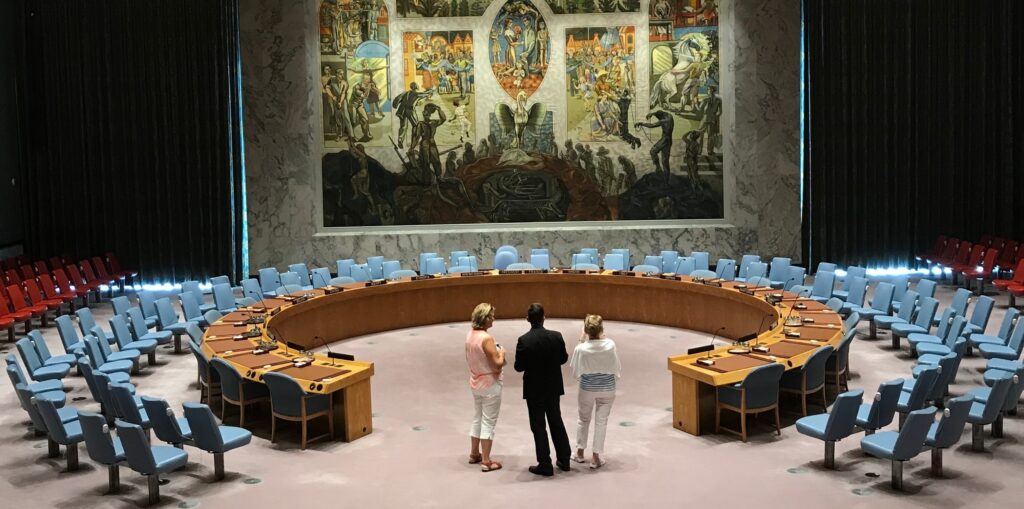In the summer of 1950, 22 scientists gathered at a meeting of the United Nations Educational, Scientific, and Cultural Organization. They were in Paris to draft a statement on the biological aspects of race. After days of debate to synthesize years of research, their consensus read as follows:
“Racist theories can in no way pretend to have any scientific foundation.”
By the time UNESCO’s proclamation made it to America, civil rights leaders in Alabama were organizing a funeral for 22-year-old WWII veteran Hilliard Brooks, murdered by a police officer after allegedly “creating a disturbance” by refusing to enter through the rear of a city bus. These same leaders were also starting to organize a movement that would take them from that very bus route in Montgomery to a bridge in Selma and later, the steps of the U.S. Supreme Court.
Simultaneously, UNESCO’s watershed report to understand race – or more accurately, to debunk it – was making its way to the highest intergovernmental body in the world.
Unbeknownst to both, UNESCO researchers and American civil rights leaders were about to join forces to catalyze the world’s first anti-racism campaign.
UNESCO, a world body – not some Southern segregated school, not some Southern governor, not even the President – UNESCO said we were not inferior.”
Rev. Jesse Jackson
The Myth of Race in the Era of Jim Crow
The document developed by UNESCO in July 1950 was the first in a series of four iterations of what’s now known as the Race Question. In it, UNESCO scientists assert, “The myth of ‘race’, has created an enormous amount of human and social damage… It has taken a heavy toll in human lives and caused untold suffering. Biological differences between ethnic groups should be disregarded.” Of their work, The New York Times reported, “Whenever it is, whatever form it takes, racism is an evil force, and to the extent that UNESCO can kill it by the truth, it will do good.”
The statement sent shockwaves around the globe. Responding to the spectrum of praise and denial, the UN agency established the historic Race Bureau. Led by Dr. Alfred Métraux for more than a decade, the Bureau was tasked to use “tools of science to combat racism.” A Swiss-born anthropologist, Métraux had served in the Americas since the early 1930s, centering his research on indigenous populations in Haiti and throughout South America. Working alongside iconic contemporaries – like Dr. Claude Lévi-Strauss and Dr. Margaret Mead – the team of anthropologists, academics, and scientists would dedicate their lives to fighting hitherto intractable ideas of human hierarchy.
Just four years into Métraux’s tenure, the Race Bureau confronted one of the earliest tests for the application of their work: Brown vs. the Board of Education. This would move the research on racism from the realm of academic inquiry into the very real challenges of implementation in a segregated society.
So began what may be described as the first global anti-racism communications campaign in history. Between 1950 and the 1965 Voting Rights Act, UNESCO published more than 300,000 pamphlets in 13 languages to educate the public on race as a social – not biological – construct. Not only did the booklets become the best-selling materials published by the agency at that time, but went on to be reprinted in their entirety in three mainstream magazines and were reported on in 133 news articles and 62 in-depth reports.
Their message of anti-racism caught fire.
Rev. Jesse Jackson notes of his own copy of the UNESCO Race Question, “We went around the South giving speeches, holding up the UNESCO study, saying that Blacks were not inferior. A world body – not some Southern segregated school, not some Southern governor, not even the President – had studied and concluded that we were not inferior. It was a big deal.”
Then, however, just as now, the work of the agency had its adversaries. Not long after the agency began their outreach campaign, South Africa – embroiled in apartheid – withdrew from UNESCO because they felt the organization’s stance on anti-racism “interfered with internal affairs.” In the U.S., Los Angeles County Public Schools temporarily banned UNESCO materials in 1953, believing they “emboldened colored people.”
In the years following the report, the Race Bureau would play a role in the eradication of state-approved segregation in every state where legal challenges to segregation post-1950 were brought. Witnesses from UNESCO were regularly brought in for expert testimony in key court cases, including Loving v. Virginia in 1967, another landmark civil rights decision of the U.S. Supreme Court declaring laws banning interracial marriage violated the Fourteenth Amendment.
UNESCO’s Role in Protecting Human Life
Dr. Métraux died on the day he retired from UNESCO in 1963. His family would say of his death that his heart simply refused to accept a world where disinformation instigated for the purpose of division could supersede the scientific basis for universal human respect.
That’s a message we need now more than ever. Even as we carry on the work to dismantle racism, new and escalating attacks on the integrity of human life continue. From discrimination on the grounds of sexual identity to the ethics of artificial intelligence, essential agencies like UNESCO exist – to paraphrase their founding statement – to use the tools of science to combat all forms of othering and strengthen human agency.
And if one nascent UN agency could succeed in using science to help end the era of Jim Crow, imagine what a stronger UNESCO will be able to accomplish.





